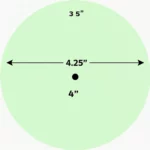When it comes to golf, every detail counts, and one of those details is the tip size of golf club shafts. You might be wondering how this affects your game. Well, we’ve got you covered! In this comprehensive guide, we’ll explore everything you need to know about golf club shaft tip sizes, their impacts on performance, and how to choose the right one for you.
Understanding Golf Club Shafts
Before diving into the specifics of tip sizes, let’s quickly review what a golf club shaft is and why it matters. The shaft is the stick part of the club that connects the grip to the clubhead. It plays a crucial role in how a golf club performs.
Shafts come in a variety of materials, weights, and stiffness levels. Each of these factors contributes to your swing, control, and ultimately, your performance on the course.
What is a Shaft Tip?
The tip of the golf club shaft is the part that connects to the clubhead. The tip size will determine how the shaft and the clubhead interact, affecting factors like flex and overall feel. Think of it as the connector between your swing and the ball, as it drastically influences how energy is transferred.
Common Tip Sizes
Golf shafts typically have the following tip sizes:
- .335 inches: This is a standard fit for most driver shafts.
- .350 inches: Typically used in iron shafts and some hybrids.
- .370 inches: Mostly seen in specialty shafts, often for putters or custom fit options.
Why Does Tip Size Matter?
The tip size of your golf club shaft can significantly impact your game for several reasons:
- Feel: The right tip size can enhance your sense of control and feedback during your swing.
- Flexibility: Tip size can affect the overall stiffness of the shaft, influencing ball trajectory and distance.
- Compatibility: If your shaft tip size doesn’t match the clubhead, the performance will be compromised.
Factors Affecting Your Choice of Tip Size
Choosing the right tip size isn’t just about numbers; it involves several factors:
1. Playing Style
Your playing style—whether you’re a beginner, intermediate, or professional—will influence your choice.
2. Swing Speed
Players with higher swing speeds often benefit from stiffer shafts, which usually have smaller tips.
3. Desired Ball Flight
If you’re looking for a higher ball flight, a softer tip could help. Likewise, a lower ball flight might necessitate a stiffer tip.
4. Shaft Material
Different materials can yield different responses. Graphite shafts tend to have a lighter weight and more flex, while steel shafts usually offer more rigidity.
5. Club Type
Drivers, irons, and wedges may all have different requirements for tip sizes. Always check specifications for each club type.
Tips for Selecting the Right Tip Size
Here are a few tips to help you select the perfect tip size for your needs:
- Consult Manufacturer Specs: Check the specifications provided by the manufacturer to understand recommended sizes.
- Get Fitted: A professional fitting can provide personalized insights tailored to your unique swing.
- Experiment: Sometimes, it’s best to try different sizes. Borrow clubs or borrow shafts if possible to find what feels right.
Graphical Comparison of Tip Sizes
| Shaft Tip Size | Common Usages |
|---|---|
| .335 inches | Drivers |
| .350 inches | Irons & Hybrids |
| .370 inches | Specialty Clubs |
Key Takeaways
- The tip size of golf club shafts plays a critical role in performance.
- Sizes typically range from .335 inches to .370 inches depending on the club.
- Choose a tip size based on your playing style, swing speed, and club type.
- Getting professionally fitted is invaluable in ensuring optimal performance.
Frequently Asked Questions (FAQs)
1. What happens if I use the wrong tip size?
Using the wrong tip size can significantly affect your golf performance, impacting swing dynamics and overall feel.
2. Can I change the tip size of my golf club?
Yes, it is possible to re-shaft a club with a different tip size; however, this often requires professional assistance.
3. Do all golf clubs use the same tip size?
No, different types of clubs have varying tip sizes. It’s crucial to check each club’s specifications.
4. Does tip size affect distance?
Yes, the tip size can influence the shaft’s flex and subsequently affect how far you can hit the ball.
5. Is it worth getting fitted for shafts?
Absolutely! A professional fitting can optimize your equipment to enhance your gameplay substantially.
6. How do I know what my swing speed is?
You can find out your swing speed through radar devices at local golf shops or during lessons with a golf pro.
7. What is the most common tip size for drivers?
The most common tip size for drivers is .335 inches.
8. Can I mix and match different tip sizes?
While it’s possible, it’s best to stick with the recommended sizes for optimal compatibility and performance.
9. Are there any special tips for beginners?
Beginners are generally recommended to start with standard tip sizes (.350 inches) and experiment as they improve.
10. What’s better, steel or graphite shafts?
It depends on personal preference. Graphite shafts are lighter and often provide better distance, whereas steel shafts offer more control.
Conclusion
Understanding the tip size of golf club shafts can lead to better performance and a more enjoyable game. Pay close attention to your playing style, swing speed, and club types. With the right tip size, you can unlock your potential on the course. Don’t hesitate to seek professional fitting services to help you make the best choices!
So, what are you waiting for? Get out there and find the perfect fit for your game! And remember, the right equipment can make a significant difference in your performance.
Happy swinging!
